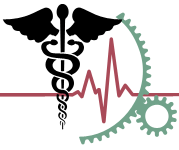 Like a lot of businesses, AEGIS is anxious about how to help with the global coronavirus crisis. While we have provided information technology support to many business sectors including healthcare, finance, and transportation logistics, we admit we’re not on the front line of the current challenges, and we have great respect and appreciation for those who are. What we can contribute is perspective based on our experience. AEGIS has been in the business of testing software for 20+ years. Granted, testing software is not the same as testing cultures from nasal passages for presence of a virus in a human. But there are certain practices common to many kinds of testing – the scientific method – and working with all kinds of information that we feel inform us about how to interpret some of the avalanche of data related to the pandemic.
Like a lot of businesses, AEGIS is anxious about how to help with the global coronavirus crisis. While we have provided information technology support to many business sectors including healthcare, finance, and transportation logistics, we admit we’re not on the front line of the current challenges, and we have great respect and appreciation for those who are. What we can contribute is perspective based on our experience. AEGIS has been in the business of testing software for 20+ years. Granted, testing software is not the same as testing cultures from nasal passages for presence of a virus in a human. But there are certain practices common to many kinds of testing – the scientific method – and working with all kinds of information that we feel inform us about how to interpret some of the avalanche of data related to the pandemic.
- Test results depend on the quality of the test and the testing process. There is an obvious tendency to want to compare results, for example, from country to country, or even from city to city. Before putting too much stock in such a comparison, however, we need to consider not all countries have used the same kind of test, followed the same testing process, or used the same guidelines for who to test or what to report. For example, China acknowledged March 30 that they were not reporting positive test results when the patient was asymptomatic, while countries like the US report those as confirmed cases. Japan appears to have a low number of infections, but their policy for testing is more limited than many other countries exposing them to the risk of under-counting cases. The test the US is using is one developed by our CDC. Whether it is more or less accurate than other tests such as the one approved by the WHO further complicates country-to-country comparison. The WSJ reported April 2 that, “Health experts say they now believe nearly one in three patients who are infected with the coronavirus are nevertheless getting a negative test result.” And previously it was reported the Czech Republic may have received faulty test kits. The reason this matters is such comparisons are being used routinely by those lobbying for more or less restrictive policy responses to the outbreak.
- The way test results are reported matters a lot. In software testing, sometimes number of defects alone is a good measure. Other times, the context requires relating defects to something else such as defects per enhancements, or defects per lines of code, etc. As we try to assess what is working or not working in minimizing infections and deaths for the novel coronavirus, gross numbers of infections and deaths are probably not as valuable as, for example, those figures as a percentage of population. As of today, Italy has experienced 13,155 deaths according to the interactive map maintained by Johns Hopkins University. That represents 0.022% of Italy’s population. The United States’ current death rate per capita is 0.002%. On Apr 1 I read separate articles praising Germany’s handling of the virus and criticizing the US response – yet the death rate per capita for both countries was nearly identical.
- We need to consider continuous testing. In our work surrounding electronic health record interoperability, we constantly beat the drum that a test result today only tells you your test result today. That may seem obvious, but when we operate within an ecosystem where things regularly change – whether interoperating software or socially interacting humans – today’s negative test result is sort of meaningless after today, especially when 100% compliance or containment is essential, unless you can guaranty nothing has changed. This is important as governments decide how to emerge from stay-at-home policies without ending up spawning another wave of infections. Fortunately some helpful tools are emerging from innovators around the world that are progressing toward a continuous testing capability. For example, Carnegie Mellon University researchers have developed a smartphone app that can screen for coronavirus through a microphone.
- Accurate, timely, comprehensive sharing of patients’ health information is essential to finding effective treatments and cures. This is going to sound the most self-serving to our business, but that doesn’t mean it’s not true. The massive volume of health data being generated through treatment of patients right now in real time is unfortunately not benefiting us as well as we need it to because our healthcare system as a whole remains well short of the goal of electronic sharing of full health records for all citizens. Now that we have a crisis in front of us, that’s more clear than ever, but it’s not too late to do better. In fact I think a lot of us are beginning to imagine that this will not be the last health crisis we see in our lifetimes. So as the nations of the world invest in attacking COVID-19, I hope that among the infrastructure spending we see is the funding needed to solve electronic health record interoperability once and for all – with global adoption of data sharing standards like FHIR, and yes continuous testing for the systems we depend on for exchanging that vital information.
Thanks for reading. Stay healthy and safe.

